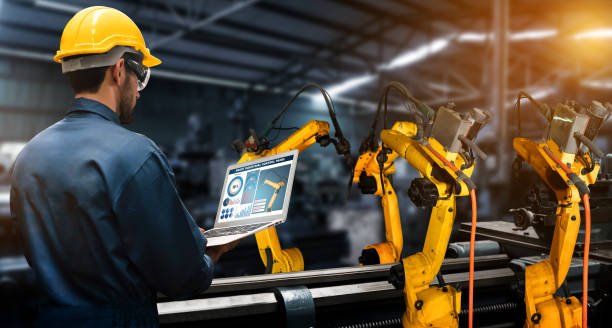In the realm of robotics, technology has played a pivotal role in shaping the capabilities and functionalities of these mechanical marvels. From their humble beginnings as rudimentary machines to the sophisticated and intelligent robots of today, the integration of cutting-edge technologies has been instrumental in pushing the boundaries of what robots can achieve. In this article, we’ll explore the significant role technology has played in the evolution of robotics, highlighting key advancements and their implications for the future.
1. Sensing Technologies: The Foundation of Robotics
One of the cornerstones of robotic functionality is its ability to perceive and interact with its environment. Early robots relied on simple sensors, but with the advent of advanced technologies, sensing capabilities have evolved dramatically. Today’s robots utilize a combination of cameras, LiDAR, radar, and other sensor technologies to navigate and understand their surroundings with unprecedented precision. This enhanced sensory perception is crucial for tasks ranging from autonomous navigation to intricate object manipulation.
2. Artificial Intelligence: Unleashing Robotic Intelligence
The integration of artificial intelligence (AI) has ushered in a new era of robotic capabilities. Machine learning algorithms enable robots to learn from experience, adapt to changing environments, and make decisions autonomously. This has revolutionized various industries, from manufacturing to healthcare, by enabling robots to perform complex tasks with efficiency and accuracy. The marriage of AI and robotics opens doors to applications such as natural language processing, facial recognition, and even emotional intelligence, making robots more intuitive and responsive.
3. Human-Robot Collaboration: Bridging the Gap
Advancements in technology have also facilitated a shift towards closer collaboration between humans and robots. Traditional industrial robots were often confined to isolated workspaces, but with the integration of sensors, vision systems, and advanced safety mechanisms, robots can now work alongside humans seamlessly. This has led to the emergence of cobots (collaborative robots), enhancing productivity and safety in various industries. The ability of robots to understand human gestures, respond to voice commands, and interpret human emotions fosters a more intuitive and efficient collaboration.
4. Connectivity and the Internet of Things (IoT): Enhancing Robotic Networks
The rise of the Internet of Things (IoT) has not only connected our everyday devices but has also deeply influenced the field of robotics. Robots can now be part of a larger network, sharing data and insights in real-time. This connectivity enhances their decision-making processes, enables remote monitoring and control, and facilitates collaborative tasks across multiple robots. In smart manufacturing environments, for instance, robots can communicate with each other to optimize production processes, leading to increased efficiency and reduced downtime.
5. Advanced Materials and Manufacturing Techniques: Redefining Robot Design
Technological advancements extend beyond the software realm, influencing the very materials and manufacturing processes used in creating robots. Lightweight and durable materials, along with innovative manufacturing techniques like 3D printing, have led to the development of more agile and versatile robotic designs. This not only improves the performance of robots but also allows for the creation of customized robotic solutions tailored to specific tasks and industries.
6. Quantum Computing: Unleashing Unprecedented Processing Power
Looking to the future, the integration of quantum computing in robotics holds immense promise. Quantum computers have the potential to process vast amounts of data at unprecedented speeds, enabling robots to perform complex calculations and simulations in real-time. This quantum leap in computing power could significantly enhance the capabilities of robots, particularly in areas requiring immense computational resources, such as advanced decision-making, optimization, and complex problem-solving.
Conclusion: The Future Landscape of Robotics
As technology continues to advance at an exponential pace, the future of robotics appears increasingly promising. The synergy of sensing technologies, artificial intelligence, human-robot collaboration, connectivity, advanced materials, and quantum computing is transforming robots into intelligent, adaptive, and highly capable entities. From manufacturing and healthcare to exploration and entertainment, the applications of robotic technology are expanding, pushing the boundaries of what was once considered science fiction. As we stand on the cusp of a new era, the integration of cutting-edge technologies in robotics promises a future where machines not only assist but seamlessly collaborate with humans, reshaping industries and revolutionizing the way we live and work.




